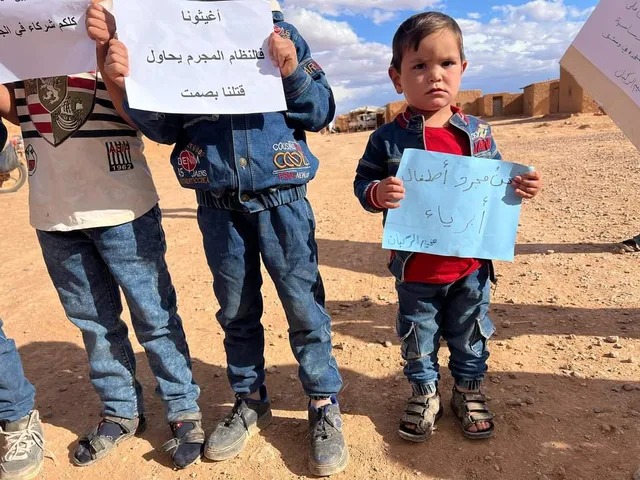Media reports from the Rukban camp indicate a concerning rise in cases of jaundice among many children due to the unavailability and exorbitant prices of medicines. In the absence of proper medical supplies, residents have resorted to herbal remedies for treatment. Meanwhile, protests against the imposed siege persist, with the local council condemning the international community’s silence.
The director of the Sham medical point within the camp estimated around 20 children affected by jaundice, prescribing vitamins and antipyretics, but the scarcity and high costs of these medications have forced reliance on alternative treatments. The severe siege by regime forces and Iranian militias continues to exacerbate living conditions, prompting urgent calls for medical and humanitarian aid.
Activists have staged demonstrations near the border between Jordan and Syria, demanding improved living conditions or access to safe routes towards liberated areas in northern Syria or east of the Euphrates. The local council in Rukban urges the international coalition, particularly U.S. forces at the Tanf military base, to enforce the Lincoln Act within the 55 km zone, ensuring civilian protection and adherence to humanitarian principles.
Despite ongoing protests and appeals, the siege persists, worsening the plight of Rukban residents. Derbas al-Khalidi, head of the local council, highlights the deteriorating health situation, particularly the increasing cases of jaundice among children. The population’s frustration grows over the prolonged blockade and the international coalition’s inaction.
Mohammed al-Fadil, from the media office of the local council, underscores the worsening conditions inside the camp, with the siege intensifying following the closure of the main road nearly a month ago. Urgent intervention is imperative to alleviate the suffering of those trapped in Rukban.
This article was translated and edited by The Syrian Observer. The Syrian Observer has not verified the content of this story. Responsibility for the information and views set out in this article lies entirely with the author.


